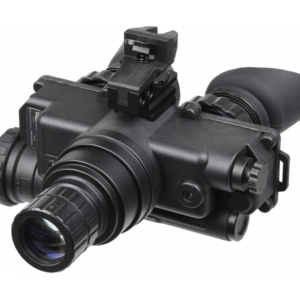
Thermal cameras in Australia, a fascinating technological advancement, function by capturing the infrared spectrum, which every object emits as heat. This capability allows them to provide visuals of the thermal energy emitted by objects, making them invaluable in various applications ranging from security to scientific research. This article delves into the functioning, uses, and potential future developments of thermal imaging technology.
How Do Thermal Cameras Work?
At the core of a thermal camera’s functionality is its ability to detect and measure infrared radiation. Every object, depending on its temperature, emits a certain level of infrared radiation which is invisible to the human eye. Thermal cameras are equipped with special sensors called microbolometers, which detect this radiation and convert it into electrical signals. These signals are then processed to produce a thermal image on a display, with different colours representing different temperatures. Warmer objects appear in shades of red and yellow, while cooler objects are depicted in blues and purples.
The sensitivity of these cameras is remarkable, as they can detect variations in temperature to fractions of a degree. This sensitivity is crucial in environments where even minor temperature differences are significant.
Applications of Thermal Imaging
- Security and Surveillance: Thermal cameras are powerful tools for security, providing clear images in complete darkness, through smoke, or even fog. This makes them essential for border security, maritime navigation, and law enforcement agencies.
- Healthcare: In medical settings, thermal imaging is used to diagnose and monitor various conditions. For example, abnormal heat patterns on the skin surface can indicate underlying conditions like vascular disorders or muscular injuries.
- Industrial and Electrical Inspections: These cameras are also pivotal in monitoring and maintaining electrical systems and machinery. They help in identifying hot spots or failures in electrical circuits, which are precursors to potential failures.
- Building and Home Inspections: Thermal imaging is utilised in building inspections to identify heat leaks, inadequate insulation, and moisture intrusion, which are important for energy conservation and mould prevention.
- Wildlife Research and Ecology: Ecologists use thermal cameras to observe nocturnal wildlife, helping them study animal behaviour without disturbance and monitor endangered species.
Advantages of Thermal Cameras
The primary advantage of using a thermal camera lies in its ability to perform under conditions where other cameras fail. Whether in complete darkness or obscured visibility due to environmental factors, thermal cameras maintain consistent performance. Additionally, the non-contact nature of thermal imaging makes it an excellent choice for hazardous or inaccessible areas.
Challenges and Limitations
Despite their numerous advantages, thermal cameras are not without limitations. One major challenge is their inability to see through glass, as glass reflects infrared radiation instead of letting it pass through. Moreover, the accuracy of thermal imaging can be affected by environmental factors like humidity and temperature fluctuations.
Furthermore, the cost of high-resolution thermal cameras can be prohibitively expensive, limiting their accessibility for widespread use in some sectors.
The Future of Thermal Imaging
Looking forward, the development of thermal imaging technology promises even greater advancements. Improvements in sensor technology are expected to enhance the resolution and sensitivity of thermal cameras. Additionally, integrating artificial intelligence (AI) could lead to smarter image processing and automatic detection systems, broadening their applicability in autonomous vehicles, advanced security systems, and more.
Summing up, thermal cameras Australia offer a unique glimpse into the invisible world of infrared radiation, providing valuable data across a myriad of applications. As technology progresses, the potential uses of thermal imaging are set to expand, making it an even more integral tool in our technological toolkit. This evolution will likely make thermal cameras more accessible and versatile, further embedding them into the fabric of modern technology.
